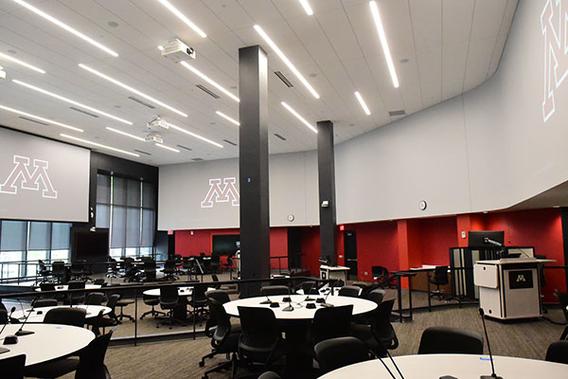
This is a list of course transformation options that we believe will best allow instructors to take advantage of the physical layout and technological affordances of an ALC. Ideally, a class taught in an ALC would incorporate most of these suggestions, though the list is not exhaustive.
1. Move a large portion of information transmission out of the classroom.
- Flip the classroom.
- Move to hybrid course.
- Make students accountable for out-of-class learning.
- Provide students with feedback on out-of-class learning.
2. Spend a majority of class time in challenging activities that actively engage students at higher cognitive levels and prepare them for assessments.
- Create in-class activities that require students to apply information they have learned outside of class.
- Create in-class activities that align with exams and assessments.
- Focus in-class activities on those that would most benefit from student interaction with the instructor and with each other.
- Create in-class activities that provide students with feedback on their knowledge and progress in the course.
- Minimize lecturing and information transmission to a small portion of the class, preferably in small chunks.
3. Maximize the use of the ALC technology affordances
Round tables
- Put students in groups/teams where they can interact and learn from each other – especially serving as peer instructors.
- Provide support for team-building and the development of teamwork skills.
- Create team projects and allow class time for students to work on them.
- Ensure that activities engage all students in meaningful work towards meeting learning outcomes.
White boards
- Create activities that require students to visually record their knowledge and ideas – problem solving etc.
- Create activities where students can learn from the work of other groups and teams and take advantage of the ability to walk around the room and see what other groups have done e.g. brainstorming or questions that don’t have one right answer.
- Create projects with a final product that can be displayed on the white boards – e.g. poster.
Open configuration of the room that allows easy movement and access to all students
- Create activities where students can learn from the work of other groups and teams and take advantage of the ability to walk around the room and see what other groups have done – e.g. gallery walk.
- Create activities where tables experiencing problems can easily signal you for help.
- Have student groups intermingle to share what their team has done i.e. jigsaws, report to other groups.
Computer display screens associated with student tables
- Create activities where different student groups locate different online resources to display.
- Have students work with common data sets and resources from which to extract information and make conclusions.
- Create projects with a final product that can be projected to the table display screen.